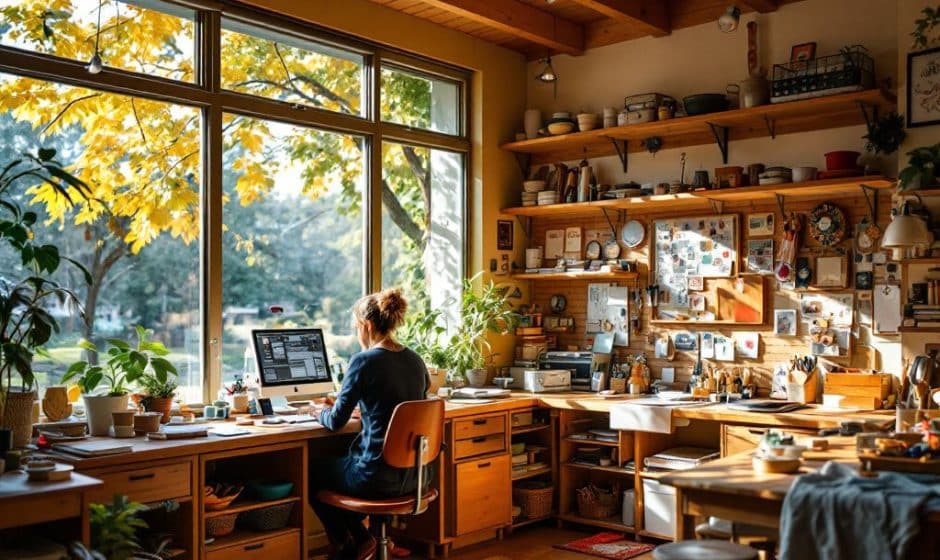Hey there, fellow maker! So, you’ve decided to carve out a little slice of heaven in your home—a place dedicated to creativity, inspiration, and maybe a bit of necessary messiness. Maybe you asked yourself one day, “Where did all my crafting supplies go?” and as your feet stumbled over yet another yarn ball or paintbrush, you realized it was finally time to Make room. I get it. Making space for a craft room has its challenges, but the magic you create once it’s set up? Totally worth it.
Craft spaces aren’t just about storing supplies. Trust me, they can be a haven for hormone regulation—a term you wouldn’t typically associate with crafts but hang with me here. A craft room can be a sanctuary where you lower stress levels, clear your mind, and rejuvenate yourself—almost like a personal health retreat at home. So, let’s dive into some casual chatter about how you can Make room and what you can expect as you conjure your crafting oasis.
Understanding the Core of Your Craft Space
**Before you start moving furniture around** and eyeing that corner with eager intent, think about what your craft room actually needs. Is it a place to sew, paint, or maybe everything at once? Different crafts have their own space needs, tools, and vibes. Sewing might need tables and storage bins, while painting asks for easels and good lighting. Craft space health isn’t just about tidiness but also about how it supports your creativity and Well-being.
It’s important to tailor your craft space to fit your personal creative process. Maybe during a fabric dyeing experiment, you realized good ventilation was non-negotiable. Or perhaps you’ve learned how natural light influences your mood when painting. These little preferences play a huge role.
Setting Up: Where Creativity Meets Organization
Now, strategizing isn’t just for military generals or chess players. You’ll appreciate a bit of forethought when you’re setting up your domain. Let’s break this down into some good ol’ fashioned steps:
Step 1: Assess the Space

You’re dreaming of a craft room paradise, but first things first—scope out what you have to work with. No need to measure straightaway. Stand there, feel it out. Got a spare room, or maybe you’re hemming in a section of the living room? Less space means getting creative with vertical storage while abundant space can mean dedicated nooks for specific projects. Your personality determines the layout more than you might think.
Step 2: Organize your Supplies
Crafting supplies are sneaky little devils and multiply more than you expect. Sort through what you already own. Everything from paints and brushes to fabrics and sewing notions, group them up. See it as a form of meditation, boosting your mental health as you sort. Who knew potential future mini Frenzies were just sitting there? This helps. Knowing what you have can reduce that “I need it all” impulse, saving you some cash.
Pro tip: Store frequently used items in clear containers within easy reach. Leaving ’em visible keeps them top of mind and prevents double-buying what you already have.
Step 3: Comfortable Crafting
You’re going to spend a lot of time in your fancy new room, right? Good seating is everything. Being comfy not only helps with concentration but also on the broader health spectrum, supporting your body’s hormone regulation by reducing stress. A plush chair, the right height table, maybe even some footrests. Add mats if you’ll be standing a lot. We’re talking orthopedically pleasant.
Additions and Accents: Make it Yours
Alright, time to add that personal flair. Accessories can transform a plain room into an artist’s sanctuary. Intricately patterned fabric curtains, a few well-placed plants, gallery walls, or even fairy lights. These elements can affect your mindset, inspiring you to even greater crafting adventures strumming the strings of calm and creativity.
Lighting: The Designer’s Key
Crafting without good lighting? That’s like cooking without spices. Fill your room with gentle, even light—natural if possible. Good light elevates your space, helps with color accuracy, and lets you work into the night without straining your eyes. Lamps that adjust brightness? Worth every penny.

Color Scheme
Personal preference, again, rules here. Bright colors energize, pale tones soothe. Go with what sings to you. Maybe why you opt for neutral walls with vibrant decor would be because it lets you change things up without too much effort. Subtle tricks like this bring harmony to your work area, which in turn influences your mood.
Tech Talking: Electrics and Efficiency
In our modern era, tech touches all parts of life—including crafting. Imagine being a step away from a digital moment-enhancer.
Power Sources and Cords
The bane of any workstation is a messy web of cords. An organized home for charging and powering up tools is essential. Cord management keeps your area tidy and safe. Stick a power strip to the side of the desk or use cord organizers. Simple solutions yet impactful on workspace tranquility.
Inspirations on the Web
Digital spice can stoke creativity fires just right. Maybe an iPad stands to watch tutorials as you try that complex lace layering technique or a mood-setting playlist echoing out a Bluetooth speaker. Technology can be your gentle companion, ushering in inspired focus modes.
Mistakes and Missteps Unveiled

In any crafty plan, hiccups happen. Here are a few reminders, I’ll circle back just in case:
- Overstuffing: More isn’t always better. Leave room to grow and shift.
- Neglecting ergonomics: Missing this? Pain really puts a damper on that passion project.
- Ignoring air quality: Breathing is non-negotiable. Stale air? Just No.
- Isolation temptations: You need to step out sometimes. Even just for a breather.
Crafting Your Well-being
Every stroke and stitch aids in regulating hormones which, surprise surprise, plays into both mood and health. Craft rooms are places of low-pressure problem-solving, which can lend to resilience and mental clarity boosts—thus neatly folding back to influence your overall home health environment.
Continued Growth
Your craft space shouldn’t be static, unlike a dusty guest room or storage unit masquerading as practicality. Let it expand or contract with your artistic journeys. Whether you take up tapestry or start dabbling in digital art, keep pace with your interests by allowing your crafting haven to evolve naturally. Think of each step as a harmonious note in your well-crafted life soundtrack.
Social Connections
Get folks together, embrace community—even vir
—
Please continue the article here if you want the full expansion on establishing a sanctuary that truly sings to your creative heart!
Frequently Asked Questions
What causes a hormonal imbalance?
A hormonal imbalance can be caused by natural changes or stages in your life, including puberty, pregnancy, perimenopause, and menopause. Other factors such as genetics, aging, increased daily stress, poor nutrition, and lack of proper activity and fitness can also contribute to hormonal imbalances. Additionally, medical conditions like tumors, adenomas, and autoimmune diseases can disrupt hormone production[3][5].
What are the signs and symptoms of a hormonal imbalance?
Signs and symptoms of a hormonal imbalance can include irritability and fatigue, mood swings and depression, skin dryness and loss of elasticity, water retention and weight gain, osteoporosis and joint pain, decreased libido, insomnia and other sleep disorders, and memory issues. These symptoms can vary depending on which hormones are imbalanced and the severity of the imbalance[3][5].
How does hormone replacement therapy help in regulating hormones?
Hormone replacement therapy (HRT) helps by restoring stable hormone levels in the body. This can lead to improved sleep, increased energy, enhanced memory, better mood stability, smoother skin, increased interest in sex, and better weight regulation. HRT can be customized, such as bioidentical hormone replacement therapy (BHRT), which uses hormones identical in structure to those produced by the human body[1][3].
How can hormonal balance be achieved and maintained?
Achieving hormonal balance involves appropriate testing and medical guidance to determine current hormone levels. A doctor can then advise on an ideal treatment plan, which may include BHRT, changes in nutrition habits, and/or exercise. Additional treatments such as high-quality supplements, nutrition guidance, fitness planning, and stress reduction plans can also be part of the overall strategy to maintain hormonal balance[1][3].
References




